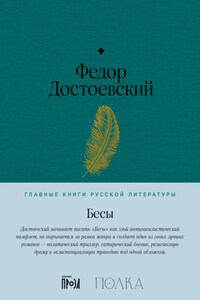Here comes a thought… There are too many of them. No. They have overwhelmed everything around. They are on subways, streets, magazines, pages of the Internet, packages, business cards. Big or small, colorful but commonly black squares are everywhere, and they form a multi-component homogeneous figure.
A square is a regular quadrilateral which angles and sides are equal. However, the square considered below is only visually similar to the described figure because its sides are not equal to each other, pairwise are not parallel.
As we hear the word “square” we recall in our mind Malevich’s painting associatively. And then the figure that appears in our consciousness becomes black. It seems that drawing a black square on a white background is very simple, and this idea is primitive. However, a painting with a simple geometric figure is recognized as a masterpiece in the world. The “Black Square” (1915) is the work of Kazimir Malevich (February 23, 1878 – May 15, 1935) that is considered as his magnum opus. It is of the high value. The artist has painted many paintings. Why has only the “Black Square” occupy the minds of people?
The painting gives a mystic call to recognize its conceptual, philosophical design and becomes a reason of viewers’ indignant w-questions. It has sparked our interest to make this versatile study. Despite the fact that there are many works on K. Malevich’s art, it remains mysterious. It is still written by a person who has not been fully understood.
It is important to understand that there are too many facts about K. Malevich and they sometimes when are taken from the various sources are not identical. Malevich has deliberately provoked these differences to integrate them into his own history of art. The artist left so many mysteries! That is why a creation of the picture of Malevich’s world, which could shed light on the hidden meanings of his art, is desired.
“I guess that exploring, studying, recognizing are possible only when you can get a unit that is not connected with surroundings, that is free from any affection and any addiction. If I can do it, then I will study it, if I don’t do it, I will receive nothing but lots of pieces of excerpts and conclusions1.” – K. Malevich wrote.
The term system was Malevich’s the most favorite one. He thought that in science and art everything new was based on previous experience and following the important tendencies could make individual art valuable.
The “Black Square” is not a form that just happened. It is an evolution of Malevich’s artistic form, idea, his meaning of life.
Brief essay on history of art and politics of the beginning of 20th century
All the artistic trends that has appeared in the 20th century are usually called the avant-garde. There are conflicting styles with completely different symbols united under this title.
The “Black Square” has become the pearl of the Russian avant-garde, national and world famous symbol that has received a response from many people.
The painting is unique due to many interpretations, variations and modifications.
The role of fine art in the formation of sign systems is invaluable, therefore, its analysis becomes necessary when studying the semiotic plan in the work of a particular artist.
The increase in the number of new author’s styles and author’s techniques, as well as the return of unappreciated or misunderstood ideas, which was initially rejected by the 20th century and re-acquired relevance at the turn of the millennium, was one of the achievements of the same 20th century.
Now, at the beginning of the new century and millennium, it is important to comprehend those global changes that have destroyed the way of life that has been taking shape for centuries. Since these changes have been proceeded tremendously fast, the attitude towards time has changed, and the century brought countless different directions in art. Technical and technological capabilities have transformed the very way of creating an artistic creation using new methods: computer graphics, photography, digital means, a variety of artistic material, etc.
There was an atmosphere of transformation in the beginning of the 20th century. The proletariat and bourgeoisie were fought for the socialist reorganization of society, the social system changed, the division due to anti-religious propaganda took place. People’s minds transformed. They started to think in completely different way.
All these events had found the reflection in the artistic styles of decadence, where artists strived to show a new, perfect, changed world with a positive attitude and meaningful disappointment at the same time, with shocking and nihilistic positions towards outdated values of culture and life. The past was interpreted as something frozen, and the future as a new necessary process. This row of social catastrophes produced then some doubts on the rationality of these events. Both artists and the creative intelligentsia became the prism of that time which projected the ideas of protest, expression, individuality, and defeat. Technological innovations gave birth to belief in their own power and independence.
So-called “Revolutionaries of the avant-garde” and the Bolsheviks took concerted action only in the first post-October years. Later Socialist realism became prevalent trend and that slowed down the process of modernization of artistic culture in our country, which was taking place in full swing in Europe, for half-century.
All these events influenced trends of painting, made it changeable and unstable. After 1930 the modernist tendencies of fiction, both Malevich’s name and his “Black Square” were banned almost until the end of the 20th century.
Kazimir Malevich became world famous after a half-century delay. In Russia it happened when the Soviet ideology collapsed. In Europe it started earlier because the artist had taken away his numerous works and canvases and they found its home in the private and public collections and in the Steidelik Museum, Amsterdam.








